Resources
School level
Type
Topic
- Citizen Science (29)
- Eco challenges (5)
- Endangered species (29)
- Extreme weather (16)
- Indigenous Sea Country (34)
- Marine debris (16)
- Reef connectivity and biodiversity (97)
- Reef Management (44)
- Reef Posters (27)
- Reef Threats (37)
- STEM Units (34)
- Sustainability (26)
- Virtual Learning Experiences (12)
- Water quality (17)
- World heritage (57)
Date
- September 2025 (3)
- September 2016 (5)
- October 2025 (6)
- October 2023 (1)
- November 2025 (1)
- November 2021 (6)
- November 2013 (1)
- March 2020 (1)
- March 2015 (1)
- June 2025 (42)
- January 2016 (1)
- January 2013 (1)
- January 2012 (1)
- January 2011 (1)
- January 2010 (1)
- January 2009 (1)
- January 2008 (1)
- January 2007 (1)
- December 2025 (2)
- December 2021 (1)
- August 2025 (4)
- August 2019 (1)
- April 2020 (1)
Search results
214 result(s) found, displaying 51 to 60
Worksheet
Comprehension activity-Fill in the missing words in the text below.
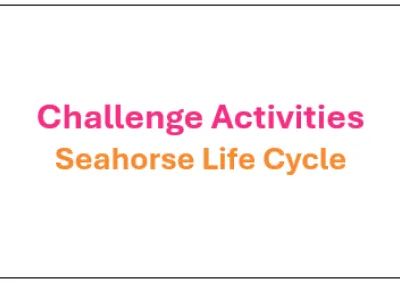
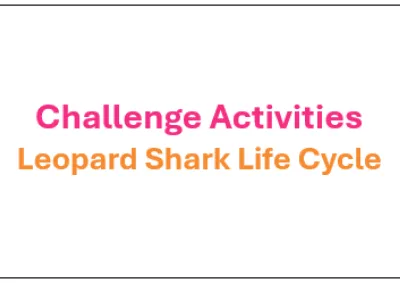
Worksheet
Fill in the missing words in the text below.

Worksheet
1. Identify and circle the non-living things in the picture above.
2. List all the living things you can find.
3. Colour in the coral reef ecosystem.
4. Extension: Choose one of the non-living things in the picture that could be harmful to a coral reef. Explain why it is harmful and what you can do to prevent it from occurring.
2. List all the living things you can find.
3. Colour in the coral reef ecosystem.
4. Extension: Choose one of the non-living things in the picture that could be harmful to a coral reef. Explain why it is harmful and what you can do to prevent it from occurring.
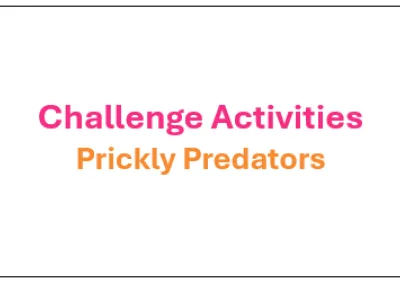
Worksheet
Questions
1. How many arms can a crown-of-thorns starfish have?
2. Describe how Crown-of-thorns starfish feed?
3. Explain an outbreak of Crown-of-thorns starfish and how it impacts the health of a reef?
4. Identify what we can do to reduce Crown-of-thorns starfish numbers on the reef?
Label the image below with the following features.
1. How many arms can a crown-of-thorns starfish have?
2. Describe how Crown-of-thorns starfish feed?
3. Explain an outbreak of Crown-of-thorns starfish and how it impacts the health of a reef?
4. Identify what we can do to reduce Crown-of-thorns starfish numbers on the reef?
Label the image below with the following features.

Worksheet
There are many animals that use mangrove forests for their home both above and below the water. colour all the animals that you can find, then answer the questions on page 2.
1. Identify as many organisms as you can and record their names below.
2. Explain why mangrove forests are important ecosystems?
3. Create a Mangrove Forest food chain using organisms identified on page 1
1. Identify as many organisms as you can and record their names below.
2. Explain why mangrove forests are important ecosystems?
3. Create a Mangrove Forest food chain using organisms identified on page 1
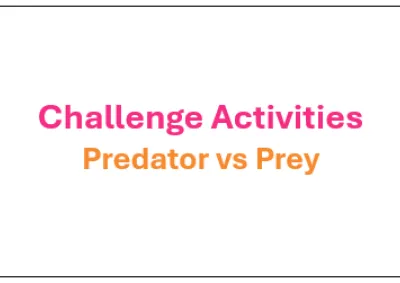
Worksheet
Predator vs Prey
Select one of the predator-prey relationships below and describe, or draw a
diagram to show:
a) How the predator "attacks" its prey
b) How the prey avoids being attacked
Select one of the predator-prey relationships below and describe, or draw a
diagram to show:
a) How the predator "attacks" its prey
b) How the prey avoids being attacked

Worksheet
1. Consider the following levels in a food chain. Write examples of the plants or animals that represent each level in a marine food chain environment.
2. Food chains vary in length though are rarely more than five levels. Suggest a reason for this.
3. Food webs give a useful description of the feeding relationships in an ecosystem.
a. Using the examples you have written in the table above, draw a pyramid of numbers which represents this food chain.
b. Draw a pyramid of numbers that represents the following scenario: a large predatory fish covered in parasites, being cleaned by a symbiotic cleaner fish.
2. Food chains vary in length though are rarely more than five levels. Suggest a reason for this.
3. Food webs give a useful description of the feeding relationships in an ecosystem.
a. Using the examples you have written in the table above, draw a pyramid of numbers which represents this food chain.
b. Draw a pyramid of numbers that represents the following scenario: a large predatory fish covered in parasites, being cleaned by a symbiotic cleaner fish.
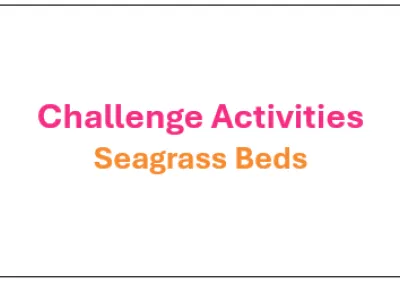
Worksheet
Seagrass meadows are important ecosystems in the Great Barrier Reef Marine Park.
Colour all the animals you can find and then answer the following questions.
1. Identify as many organisms as you can and record their names below:
2. Define the following terms: a. Producer b. Consumer c. Decomposer
3. Identify an organism in a seagrass meadow that is a: a. Producer b. Consumer c. Decomposer
Colour all the animals you can find and then answer the following questions.
1. Identify as many organisms as you can and record their names below:
2. Define the following terms: a. Producer b. Consumer c. Decomposer
3. Identify an organism in a seagrass meadow that is a: a. Producer b. Consumer c. Decomposer

Worksheet
Structural Adaptations
1. How do corals compete for light? Reef building corals require solar energy to grow and lay down their skeleton.
2. Your challenge is to investigate the structural adaptations that corals have evolved to compete for this valuable resource.
3. Use the information gained to complete the table below.
1. How do corals compete for light? Reef building corals require solar energy to grow and lay down their skeleton.
2. Your challenge is to investigate the structural adaptations that corals have evolved to compete for this valuable resource.
3. Use the information gained to complete the table below.



